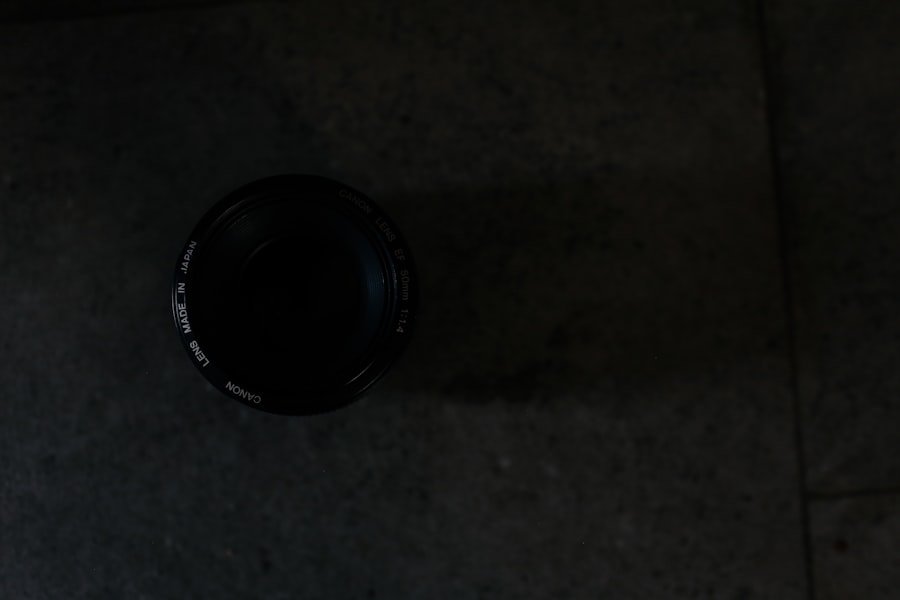Qigong and calligraphy, though seemingly disparate practices, share a profound connection rooted in the principles of mindfulness, energy flow, and artistic expression. Qigong, an ancient Chinese practice, focuses on cultivating and balancing the vital life force known as “qi.” This practice encompasses a series of movements, breathing techniques, and meditative states designed to enhance physical health and emotional well-being. Calligraphy, on the other hand, is the art of beautiful writing, where each stroke of the brush is imbued with intention and emotion.
Both disciplines require a deep understanding of rhythm, control, and the ability to be present in the moment. At their core, both Qigong and calligraphy emphasise the importance of intention. In Qigong, practitioners harness their breath and movements to channel energy throughout their bodies, promoting healing and vitality.
Similarly, in calligraphy, the artist must focus on each stroke, allowing their emotions and thoughts to flow onto the paper. The principles of Qigong can enhance one’s calligraphic practice by fostering a sense of calm and concentration, while the discipline of calligraphy can deepen one’s understanding of body mechanics and energy flow in Qigong. Spaces are filling up fast! Register for Chinese classes at the LC Chinese School in Oslo today.
Table of Contents
ToggleSummary
- Qigong and calligraphy share principles of balance, harmony, and connecting mind, body, and spirit.
- The art of ink in qigong and calligraphy holds significant cultural and spiritual importance.
- Qigong and calligraphy serve as a form of meditation, promoting inner peace and tranquility.
- Flow and movement are essential in qigong and calligraphy, reflecting the influence of nature and the environment.
- Embracing imperfection and emotion is encouraged in qigong and calligraphy, with principles applicable to everyday life.
Exploring the Concept of Balance in Qigong and Calligraphy
Balance is a fundamental concept in both Qigong and calligraphy, serving as a guiding principle that informs practice and execution. In Qigong, balance is not merely physical; it encompasses emotional and spiritual dimensions as well. Practitioners learn to harmonise their movements with their breath, creating a sense of equilibrium that promotes overall well-being.
This balance allows for the smooth flow of qi throughout the body, facilitating healing and enhancing vitality. In calligraphy, balance manifests in the composition of characters and the distribution of ink on paper. A well-executed piece of calligraphy reflects a harmonious relationship between light and dark, thick and thin strokes.
The artist must maintain a steady hand while allowing for fluidity in movement, creating a visual balance that captivates the viewer. Just as in Qigong, where balance leads to a state of flow, in calligraphy, it results in a piece that resonates with beauty and grace.
The Role of Harmony in Qigong and Calligraphy

Harmony is an essential element that permeates both Qigong and calligraphy, acting as a bridge between the physical and spiritual realms. In Qigong practice, harmony is achieved through the synchronisation of breath, movement, and intention. This alignment fosters a sense of inner peace and tranquillity, allowing practitioners to connect with their inner selves and the world around them.
The harmonious flow of qi promotes not only physical health but also emotional stability. In calligraphy, harmony is reflected in the relationship between the artist and their medium. The brush becomes an extension of the artist’s spirit, allowing for a seamless expression of thoughts and emotions.
Each stroke must be executed with care to maintain harmony within the composition. The interplay between ink and paper creates a dialogue that speaks to the viewer’s soul. Thus, both practices encourage individuals to seek harmony within themselves and their surroundings.
The Art of Ink and its Significance in Qigong and Calligraphy
Ink holds a special significance in both Qigong and calligraphy, serving as a medium through which energy and intention are expressed. In calligraphy, ink is not merely a tool; it embodies the essence of the artist’s emotions and thoughts. The choice of ink—its thickness, colour, and texture—can dramatically alter the character of a piece.
Each stroke carries with it the weight of intention, making ink an integral part of the artistic process. In Qigong, while ink may not be directly involved in practice, its symbolism resonates deeply within the philosophy of energy flow. Just as ink flows from brush to paper, so too does qi flow through the body during Qigong practice.
The fluidity of ink serves as a metaphor for the smooth movement of energy within oneself. Both disciplines highlight the importance of being present in the moment; whether it is through the careful application of ink or the mindful execution of movements, practitioners are encouraged to embrace the process rather than fixate on the outcome.
Connecting the Mind, Body, and Spirit in Qigong and Calligraphy
The connection between mind, body, and spirit is central to both Qigong and calligraphy. In Qigong practice, this triad is cultivated through intentional movements that promote awareness and presence. As practitioners engage in flowing sequences, they learn to synchronise their breath with their movements, fostering a deep connection between their physical body and mental state.
This holistic approach encourages individuals to become more attuned to their inner selves while also connecting with their environment. Similarly, calligraphy requires a profound connection between mind and body. The artist must engage their entire being when creating each stroke; this involves not only physical dexterity but also mental focus and emotional expression.
The act of writing becomes a meditative practice that allows for self-discovery and reflection. As artists pour their thoughts onto paper through ink, they create a tangible representation of their inner world—a beautiful manifestation of their mind-body-spirit connection.
The Practice of Qigong and Calligraphy as a Form of Meditation

Both Qigong and calligraphy can be viewed as forms of meditation that promote mindfulness and self-awareness. In Qigong practice, meditation is often integrated into movement sequences, allowing practitioners to enter a state of flow where thoughts dissipate, leaving only the present moment. This meditative aspect enhances relaxation while also promoting clarity of mind—a vital component for overall well-being.
Calligraphy also serves as a meditative practice; each stroke requires concentration and presence. As artists immerse themselves in their work, they often find that time seems to stand still. The rhythmic motion of the brush against paper can induce a trance-like state where distractions fade away.
This meditative quality allows for introspection and emotional release, making calligraphy not just an art form but also a pathway to inner peace.
Finding Inner Peace and Tranquility through Qigong and Calligraphy
The pursuit of inner peace is a common thread that runs through both Qigong and calligraphy. Practitioners often turn to these disciplines as a means to escape the chaos of daily life and reconnect with themselves on a deeper level. In Qigong, this journey towards tranquillity is facilitated through mindful movements that promote relaxation and stress relief.
As practitioners cultivate their qi through breathwork and gentle exercises, they often experience profound shifts in their emotional state. In calligraphy, artists find solace in the act of creation itself. The repetitive nature of brush strokes can be incredibly soothing; it allows individuals to express their emotions without words while simultaneously quieting their minds.
Each completed piece serves as a testament to their journey towards inner peace—a visual representation of their thoughts transformed into art. Together, these practices offer pathways to tranquillity that resonate deeply within those who engage with them.
The Importance of Flow and Movement in Qigong and Calligraphy
Flow is an essential aspect that characterises both Qigong and calligraphy. In Qigong practice, flow refers to the seamless transition between movements that allows for an uninterrupted circulation of qi throughout the body. This fluidity not only enhances physical health but also cultivates mental clarity as practitioners learn to let go of tension and embrace ease in their movements.
In calligraphy, flow manifests through the graceful execution of strokes that create beautiful characters on paper. The artist must maintain a steady rhythm while allowing for spontaneity in their movements—this balance between control and freedom results in pieces that are alive with energy. Just as in Qigong where flow promotes harmony within oneself, in calligraphy it creates an aesthetic experience that resonates with viewers on multiple levels.
Embracing Imperfection and Emotion in Qigong and Calligraphy
Both Qigong and calligraphy teach valuable lessons about embracing imperfection as part of the creative process. In Qigong practice, individuals learn to accept their limitations while striving for improvement; this acceptance fosters resilience and encourages personal growth over time. Practitioners come to understand that each session may vary—some days may feel more fluid than others—but every experience contributes to their overall journey.
In calligraphy, imperfection becomes an integral part of artistic expression. Each stroke carries with it the artist’s emotions—joys, frustrations, hopes—making every piece unique. Rather than striving for perfectionism, artists are encouraged to embrace spontaneity; this authenticity resonates deeply with viewers who appreciate the rawness behind each creation.
Both disciplines celebrate individuality by honouring imperfections as essential components of personal expression.
The Influence of Nature and the Environment in Qigong and Calligraphy
Nature plays a significant role in shaping both Qigong practice and calligraphic art forms. In Qigong, practitioners often seek outdoor spaces where they can connect with natural elements such as wind or sunlight while performing movements—this connection enhances their experience by grounding them within their environment. The rhythms found in nature serve as inspiration for many sequences; practitioners learn from observing how trees sway or water flows.
Similarly, nature influences calligraphic art through its themes—many artists draw inspiration from landscapes or natural phenomena when creating pieces that reflect beauty found outside themselves. The organic shapes found in nature often translate into fluid brush strokes that evoke feelings associated with specific environments—tranquillity from serene lakes or energy from bustling forests. Both practices encourage individuals to cultivate awareness towards their surroundings while finding inspiration within them.
Applying the Principles of Qigong and Calligraphy to Everyday Life
The principles learned through Qigong and calligraphy extend far beyond practice sessions; they can be applied to everyday life for enhanced well-being. By incorporating mindfulness into daily routines—whether through intentional breathing exercises or moments spent appreciating beauty around us—we can cultivate greater awareness within ourselves while navigating life’s challenges. Moreover, embracing creativity allows us to express our emotions authentically—whether through writing notes or engaging in artistic pursuits like drawing or painting—these acts foster connection with ourselves while providing outlets for self-discovery.
Ultimately both disciplines remind us that life itself is an art form; by embracing its complexities with grace we can navigate our journeys more fully. As we explore these rich traditions further at LC Chinese School in Oslo—where dedicated courses on both Qigong practices alongside Chinese calligraphy are offered—we invite you to deepen your understanding while cultivating skills that resonate within your own life journey! Through engaging classes led by experienced instructors who share insights into these ancient arts you will find opportunities not only for personal growth but also connections with like-minded individuals who share similar passions!







